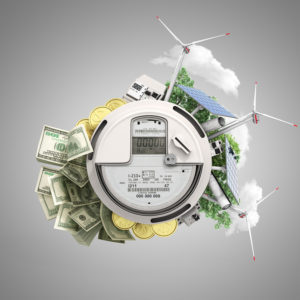An October report from the White House Council of Economic Advisers has a stunning and clear finding: the increased domestic production of natural gas and oil is saving a family of four $2,500 a year. At a time of escalating health care costs, college tuitions and property taxes, and with many living paycheck to paycheck, lower fuel costs are keeping tens of millions of Americans above water.
CEA reports $2,000 of the annual savings is because the domestic price of natural gas has fallen sharply, 63 percent from 2007 to 2018. This has driven the wholesale cost of electricity down 45 percent in the same time period. An additional $500 in annual savings comes from lower oil and gasoline costs.
The fuel savings’ costs, though, are being largely wiped out by higher electricity fees and taxes, often to subsidize renewable power. In fact, the U.S. Energy Information Administration reports that from 2009 to 2018 residential electricity prices rose 12 percent, despite the plummeting cost of natural gas. This is slightly below the Consumer Price Index increase of 17 percent.
Some states are hit much worse than others.
New York and New England, for example, are paying higher prices because of bans on hydraulic fracturing and other policies. CEA determined, “New York’s failure to approve new pipelines causes consumers in New York and New England to pay an estimated $2 billion more in energy costs per year, or $233 for a family of four.”
This came after a 2017 study by the Independent Power Producers of New York found that “about 70 percent of residential electric bills are state taxes, public policy fees, and transmission and distribution charges.”
And it is the poor who are hit hardest by higher energy costs, and who in turn have benefited from increased U.S. energy production. CEA says, “Because low-income households spend a larger share of their income on energy bills, lower energy prices disproportionately benefit them: shale-driven savings represent 6.8 percent of income for the poorest fifth of households compared to 1.3 percent for the richest fifth of households.”
There are three lessons that policymakers and consumers should take to heart from the CEA report.
—Use more natural gas. There are many opportunities to increase natural gas use to benefit the economy and the environment. Natural gas can replace older and dirtier oil heat. It should also power more vehicles. A study for the California Energy Commission found compressed natural gas vehicles produce up to 29 percent less greenhouse gas emissions than comparable gasoline vehicles.
—Increase Transparency. Just as the CEA report has quantified the benefits of increased natural gas production at the family level, so too should other state and federal reports make clear the bottom-line impact of major energy projects and programs to families.
—Prioritize Expenditures. It remains important for America to modernize its electric grid, much of which is decades old, and to fortify it against cyberattacks. This underscores the need to have responsible spending on fuel sources and to keep related energy taxes low.
As America wrestles with its energy policy, it will be essential to keep the effect to families front and center, less they be unduly burdened with electricity costs and related taxes.

